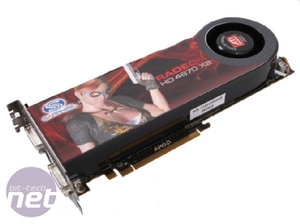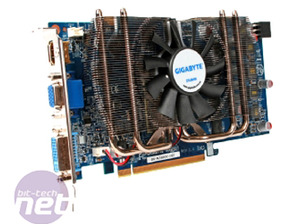Choosing the graphics cards
The primary criteria of choosing a graphics card for folding should be performance. Unlike gaming performance, which is measured in fps (frames per second), the metric used for folding performance is ppd (points per day). However, just as different graphics cards are better or worse when running different games, folding performance doesn’t increase according to the cost of the graphics card.For example, since the CUDA API was developed on the GeForce 8-series architecture, these GPUs fold very well (given their low cost) compared with the more expensive GeForce 200-series GPUs. There’s also a huge disparity between ATI and Nvidia GPUs. Although the gap is closing, Nvidia GPUs produce far more ppd per pound than ATI GPUs.
Another factor to consider is power consumption, as some graphics cards consume much more power than others while barely folding any faster. We’d also advise steering clear of heavily pre-overclocked graphics cards. As folding places the GPU under enormous strain, you’ll often find that a heavily pre-overclocked card will play games without a hitch, but will crash and burn after a few days of folding. Another element to consider is multi-GPU cards such as the GeForce GTX 295 and Radeon HD 4870 X2.


Although ATI cards such as this Radeon HD 4870 X2 (left) currently have the upper hand in gaming, Nvidia cards such as this GeForce GTS 250 (right) are, in general, much faster at folding.
Nvidia cards have a major advantage here – by disabling SLI in the ForceWare control panel, you can have one folding client on each GPU. However, it’s tricky to get folding working properly on both GPUs of a HD 4870 X2, and it’s currently impossible if you’re running 64-bit Vista. The simplest instructions for setting up an HD 4870 X2 to fold two WUs Windows XP can be found at on our forum.
Although it’s possible, mixing and matching different graphics cards in one PC isn’t always a good idea. This is due to a well documented (but still unfixed) limitation of the CUDA API – if the Nvidia GPUs have a different number of stream processors then folding will run much slower than it should. You can reduce this effect by installing the GPU with the highest number of stream processors in the PCI-E slot closest to the CPU socket, but even then, folding won’t run optimally. To achieve the best result, all the GPUs need to have the same number of stream processors. However, they can run at different frequencies and have different memory configurations. For example, you can run both a GeForce 9800 GX2 and 512MB GeForce 8800 GTS, as both these GPUs have 128 stream processors.

MSI MPG Velox 100R Chassis Review
October 14 2021 | 15:04









Want to comment? Please log in.